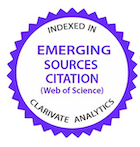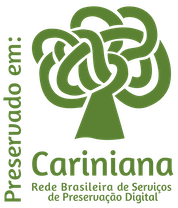Susceptibilidade de Chrysomya albiceps A Beauveria bassiana em condições de laboratório
Resumo
Chrysomya albiceps (Wiedemann) é um importante vetor de doenças de animais e humanos, e também causador de miíases secundárias. Avaliou-se a patogenicidade de Beauveria bassiana (Balsamo) Vuillemin (URM 3447), in vitro, sobre ovos, larvas e adultos em condições de laboratório climatizado sob a temperatura de 28 ± 1 °C. Foram feitas suspensões de conídios (104, 105, 106, 107 e 108 conídios.mL-1), para análise dos parâmetros biológicos. No bioensaio com ovos, o percentual de eclosão variou de 84,81% a 97,22%. No bioensaio com larvas, o período de pré-pupa variou de 1 a 1,04 e de pupa, de 5,00 a 5,09 dias; o percentual de emergência de adultos a partir de larvas tratadas variou de 30,88% a 80,82%. No bioensaio com adultos, a longevidade para machos e fêmeas foi de 4,51 a 6,77 e 10,19 a 14,67 dias, respectivamente; a mortalidade acumulada no 7° dia variou de 47,50 % a 81,20% para machos e de 23,70 % a 55,00% dias para fêmeas; o período de postura variou de 10 a 17,75 dias e o percentual de larvas eclodidas a partir de fêmeas infectadas variou de 71,39% a 91,25%.
PALAVRAS-CHAVES: Fungo entomopatogênico, parâmetros biológicos, patogenicidade.
Downloads
Downloads
Publicado
Como Citar
Edição
Seção
Licença
Copyright (c) 2008 Ciência Animal Brasileira / Brazilian Animal Science

Este trabalho está licenciado sob uma licença Creative Commons Attribution 4.0 International License.
Autores que publicam nesta revista concordam com os seguintes termos:
- Autores mantém os direitos autorais e concedem à revista o direito de primeira publicação, com o trabalho simultaneamente licenciado sob a Licença Creative Commons Attribution que permite o compartilhamento do trabalho com reconhecimento da autoria e publicação inicial nesta revista.
- Autores têm autorização para assumir contratos adicionais separadamente, para distribuição não-exclusiva da versão do trabalho publicada nesta revista (ex.: publicar em repositório institucional ou como capítulo de livro), com reconhecimento de autoria e publicação inicial nesta revista.
- Autores têm permissão e são estimulados a publicar e distribuir seu trabalho online (ex.: em repositórios institucionais ou na sua página pessoal) a qualquer ponto antes ou durante o processo editorial, já que isso pode gerar alterações produtivas, bem como aumentar o impacto e a citação do trabalho publicado (Veja O Efeito do Acesso Livre).


























